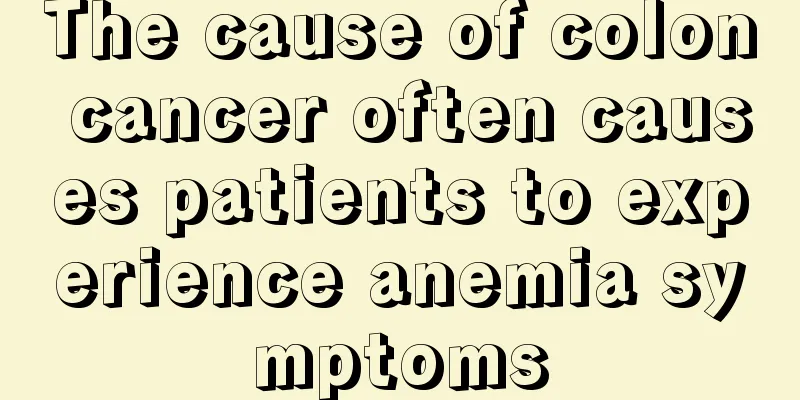What are the treatments for peritonitis

|
Peritonitis is a type of abdominal disease. The main causes of this disease are viral infection, trauma, damage caused by chemicals, etc. This is a relatively serious disease, which includes primary peritonitis and secondary peritonitis, and secondary peritonitis occurs more frequently. After the onset of peritonitis, it will indirectly cause infection and damage to other abdominal organs. People with this disease may experience fever, vomiting, and some complications, such as abdominal swelling, low blood pressure, etc. Life-threatening symptoms should be treated in time. The following will introduce the treatment of peritonitis. 1. Non-surgical treatment 1. Body Position When there is no shock, the patient should take a semi-recumbent position to facilitate drainage. When in a semi-recumbent position, you should frequently move your lower limbs and change the pressure points to prevent venous thrombosis and pressure sores. 2. Fasting Patients with gastrointestinal perforation must absolutely fast to reduce continued leakage of gastrointestinal contents. 3. Gastrointestinal decompression It can reduce gastrointestinal distension, improve gastrointestinal wall blood circulation, and reduce the leakage of gastrointestinal contents into the abdominal cavity through the rupture. 4. Intravenous infusion of crystalloid colloid solution Fasting patients with peritonitis must receive fluid infusion to correct water, electrolyte, and acid-base imbalances. Patients with severe exhaustion should receive more blood, plasma, and albumin to replenish the protein lost due to peritoneal exudation and prevent hypoproteinemia and anemia. 5. Supplement calories and nutrition Peritonitis requires a large amount of calories and nutrition to meet its needs. Compound amino acid solution should be given to reduce the consumption of protein in the body. Deep vein high nutrition therapy should be considered for patients who cannot eat for a long time. 6. Application of antibiotics Large doses of broad-spectrum antibiotics should be used in the early stage and then adjusted according to the results of bacterial culture. Choose sensitive antibiotics, such as chloramphenicol, clindamycin, metronidazole, gentamicin, ampicillin, etc. For patients with Gram-negative bacterial sepsis, third-generation cephalosporins, such as Bilirubin, can be used. 7. Analgesia For patients whose diagnosis and treatment have been determined, use pethidine or morphine to relieve pain. However, if the diagnosis has not been confirmed and the patient still needs observation, it is not advisable to use painkillers to avoid masking the condition. 2. Surgical treatment 1. Lesion treatment The earlier the infection source is cleared surgically, the better the patient's prognosis. In principle, the surgical incision should be as close to the lesion as possible. A straight incision is preferred to facilitate upward and downward extension and to facilitate changes in surgical methods. 2. Clean the abdominal cavity After eliminating the cause of the disease, the pus in the abdominal cavity should be sucked out as much as possible, and the food and residue, feces, foreign objects, etc. in the abdominal cavity should be cleared out. 3. Drainage The purpose is to allow the exudate that continues to be produced in the abdominal cavity to be discharged from the body through drainage so that the remaining inflammation can be controlled, limited and eliminated. Prevent the occurrence of abdominal abscesses. After surgery for diffuse peritonitis, drainage is generally not required as long as the area is cleaned thoroughly. However, abdominal drainage must be placed in the following circumstances: ① The necrotic lesion cannot be completely removed or a large amount of necrotic material cannot be removed; ② There is a lot of exudate or bleeding at the surgical site; ③ A localized abscess has formed. Prognosis Due to advances in diagnosis and treatment, the prognosis of acute peritonitis has improved compared with the past, but the mortality rate is still between 5% and 10%. The incidence of primary peritonitis in patients with cirrhosis and ascites is as high as 40%. Delayed diagnosis and late treatment will have a poor prognosis for children, the elderly, and those with heart, lung, kidney diseases and diabetes. prevention Early and appropriate treatment of intra-abdominal inflammatory diseases that may cause peritonitis is a fundamental measure to prevent peritonitis. Any abdominal surgery, including abdominal puncture, should be performed strictly according to aseptic techniques. Oral antibiotics should be given before intestinal surgery to reduce the occurrence of peritonitis. |
<<: What are the side effects of double eyelid cream
>>: What is radionuclide therapy and what are its effects?
Recommend
What are the dangers of children drinking Coke
Generally speaking, most parents like their child...
I always feel uncomfortable. What's going on?
Feeling uncomfortable is a manifestation of a bad...
What causes back pain and stomach pain?
What is lower back pain and stomach pain? This is...
How to treat scars left by chalazion surgery?
Granuloma is a common skin disease that sometimes...
What is the reason for black stool and how to treat it
Black stool is a situation that people often enco...
Can you eat dead clams? A foodie expert tells you
Flower clams are also known as clams. They have h...
How to cure external hemorrhoids
People are very troubled by the disease of extern...
Can a 10-year-old child get stomach cancer?
The chance of a 10-year-old child developing stom...
Is holding urine for a long time good for kidney function?
Kidney function is a very important function of t...
Will I get fat if I occasionally overeat?
Overeating is a problem that many people have. Of...
What is a healthy diet during radiotherapy for nasopharyngeal carcinoma
In recent years, nasopharyngeal carcinoma has bec...
Is the morning and evening honey weight loss method effective?
Honey is a holy product for weight loss and has a...
Do cosmetics need to be changed frequently
Cosmetics have become an indispensable item in pe...
How to use the moxibustion cup
I believe everyone is familiar with moxibustion j...
How to quickly reduce the redness, swelling and itching after applying a facial mask
If redness, swelling and itching occur after appl...









